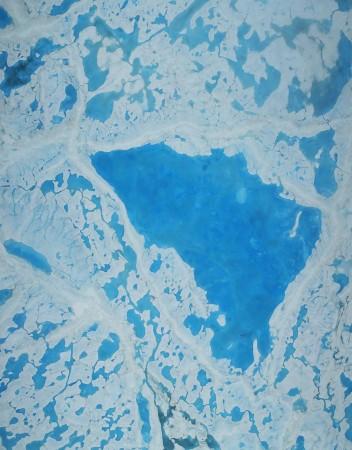The Intergovernmental Panel on Climate change (IPCC) has just released its latest major assessment report on global climate change, approved by the world's governments but the major difference this year is the contribution by lead author Darrell Kaufman and a world team of paleoclimatologists who changed the research perspective with an eye into the last 150 years or more.
The Working Group of Climate Change 2021 report comprised contributions of 200 scientists from 66 countries who assessed the current scientific understanding of climate change. Northern Arizona University Regents' Professor Darrell Kaufman of the School of Earth and Sustainability is lead author of the report, which will form the scientific underpinnings for negotiations with governments later this year to limit global carbon emissions.

Kaufman who authored the chapter, "The changing state of the climate system," brings in a perspective that was different from the earlier reports as it features information about natural climate variability over a wide range of time scales going into the past "paleoclimate" that preceded industrilization 150 years ago.
"My role in the new report focused on changes in the climate system prior to industrialization, or 'paleoclimate', as context for understanding what's happening now and what could happen in the future," said Kaufman, who also co-authored the report's FAQs and summary documents, including the "Summary for policymakers," which was subjected to an intense line-by-line approval process involving dialogue between the authors and delegates from more than 100 countries.
"It was a lot of work, but super gratifying to have the opportunity to carry it through to the approval step. That's where authors and governments collaborated to craft a summary that's timely and most helpful for policy decisions."

Kauffman's team studied how the climate system changes on time scales of decades to many thousands of years, as it responds to both natural and human-caused forcings. "Understanding environmental change and its current trajectory requires a long-term perspective of the natural variability in the Earth system," he said.
"In collaboration with our colleagues worldwide, we are developing major global datasets of long-term climate to better quantify past changes and to compare them with the output of Earth system models," explained Kauffman.
The scientists' recent work clarifies how unusual recent global warming has been compared to natural climate fluctuations of the past. Evidence from warmer periods that occurred prior to industrialization, generated by Kauffman's NAU team, was also used in the IPCC report to clarify how climate change will play out over multiple centuries and millennia, as polar ice, deep ocean circulation and other slow-moving features of the climate system adjust to a warmer world.
Paleoclimatology studies cited in 2021 IPCC report
Kauffman team's findings of global warming over the past 150 years, which has more than undone the global cooling that occurred over the past six millennia, was a key pointer in the report. The millennial-scale global cooling began approximately 6,500 years ago when the long-term average global temperature topped out at around 0.7°C warmer than the mid-19th century. Since then, accelerating greenhouse gas emissions have contributed to global average temperatures that are now surpassing 1°C above the mid-19th century.

Another British team reconstructed the global average temperature over the Holocene Epoch—the period following the Ice Age and beginning about 12,000 years ago. The team compiled a new record of hydroclimatic change in the past 10,000 years in Arctic Alaska, revealing that periods of reduced sea ice result in isotopically heavier precipitation derived from proximal Arctic moisture sources. The researchers used isotope-enabled model simulations to compile a systematic regional paleoclimate records.
In 2020, despite the Covid lockdown and quarantine restrictions, an international group of 93 paleoclimate scientists from 23 countries — led by Kaufman, McKay, Routson and Erb— published a set of records in Scientific Data representing the most comprehensive paleoclimate data ever compiled for the past 12,000 years, compressing 1,319 data records based on samples taken from 679 sites globally.
Global database
At each site, researchers analyzed ecological, geochemical and biophysical evidence from both marine and terrestrial archives, such as lake deposits, marine sediments, peat and glacier ice, to infer past temperature changes. Countless scientists working around the world over many decades conducted basic research contributing to the global database.

In 2019, Routson led the paleoclimate team in a study published in Nature using climate records dating back thousands of years to demonstrate that warming in the Arctic is associated with fewer storms and increased aridity in a huge swath of the Northern Hemisphere. The scientists showed that this pattern could lead to dramatic effects on agriculture and population centers throughout the U.S., Europe and Asia.
Another 2016 study stated that global warming began in the Arctic and tropical oceans before thermometers were widespread enough to record the early signal. Kaufman and McKay, along with scientists from around the world, discovered that human-caused global warming began in the mid-1800s, after examining the climate variation found in corals, ice cores, tree rings and the changing chemistry of stalagmites in caves worldwide.















